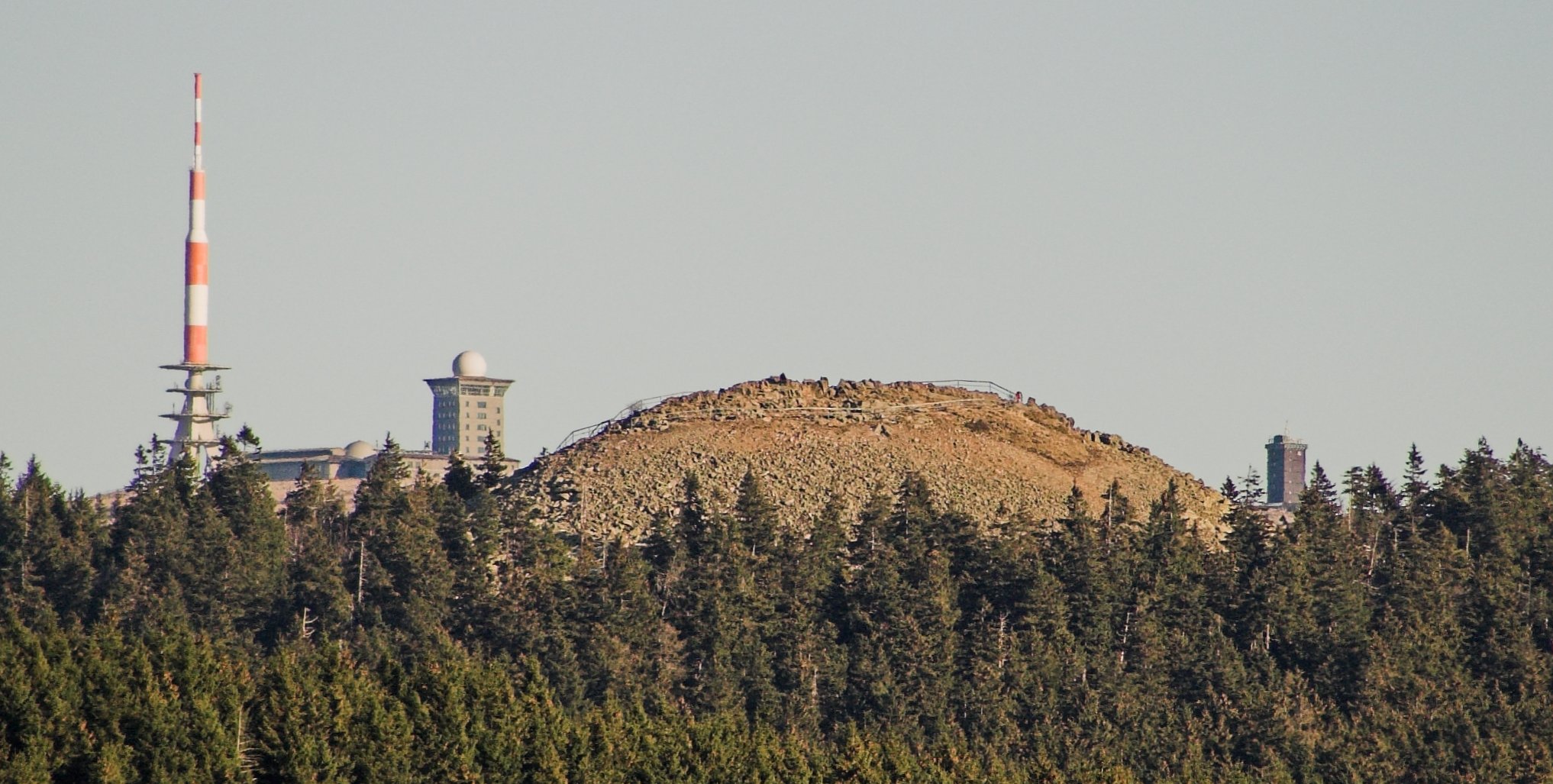|
Rehberg (Harz)
At above sea level, the Rehberg in the Harz mountains is the fourth highest mountain in the German state of Lower Saxony, and the fifth-highest in the Harz. Location and access It is located in the Harz National Park immediately north of Sankt Andreasberg. Its summit is a broad, flat dome, much of which is forested. It is not easily accessible because the route from the Rehberg 'ski cross' (''Rehberger Skikreuz'') was renaturalised several years ago by the Harz National Park as part of its nature conservation planning. In addition, in the region of the summit a marsh biotope has been created by artificial water damming. Along the mountain's eastern and southern sides run two tracks: the '' Rehberger Grabenweg'', with its tavern, the ''Rehberger Grabenhaus'' (checkpoint 155 in the Harzer Wandernadel system. Higher up is the ''Rehberger Planweg'' which takes walkers and cross-country skiers around the mountain. Observatory Due to its location and the lack of habitation on an ... [...More Info...] [...Related Items...] OR: [Wikipedia] [Google] [Baidu] |
Achtermannshöhe
At , the Achtermannshöhe (also just called the Achtermann) in the Harz National Park is the third highest mountain in Lower Saxony and the fourth highest in the Harz mountains. It lies in the unparished area of Harz between the Harz-Heide route ( B 4) and the old Inner German Border about 6 km north of Braunlage. Its summit, covered with loose boulders, stands proud of the surrounding trees and offers a superb all-round view. Equally its characteristic rounded hilltop or ''Kuppe'' is visible in good weather from many other points in the Harz. The Achtermann may be accessed by paths leading from Oderbrück and Königskrug. Geology The base of the Achtermannshöhe is part of the granite massif of the Brocken, which extends across a wide area between Wurmberg, Torfhaus and Elend. By contrast, the rocky, treeless ''Kuppe'' of the Achtermann comprises hornfels, a contact metamorphic rock. The hornstone on the summit has a depth of about 10 m and was formed fro ... [...More Info...] [...Related Items...] OR: [Wikipedia] [Google] [Baidu] |
Harzer Wandernadel
The Harzer Wandernadel is a system of hiking awards in the Harz mountains in central Germany. The hiker (or mountain biker) can earn awards at different levels of challenge by walking to the various checkpoints in the network and stamping his or her passbook to record the visit. With 222 checkpoints in three federal states and across five districts in the Harz and with membership in five figures, the system has gained a following Germany-wide. Purpose The idea of the ''Wandernadel'' (literally "hiking needle/pin" --> "hiking badge") is to give those holidaying in the Harz a worthwhile goal to achieve and encourage them to stay for longer or return. It also aims to encourage those who live in the local area to go hiking and improve their fitness. In addition the system helps tourists and locals to get to know the many different sights and hiking trails in the Harz. To that end, checkpoints have been located at scenic viewing points, places of geological or botanical, culturalbo ... [...More Info...] [...Related Items...] OR: [Wikipedia] [Google] [Baidu] |
Mountains Of The Harz
A mountain is an elevated portion of the Earth's crust, generally with steep sides that show significant exposed bedrock. Although definitions vary, a mountain may differ from a plateau in having a limited summit area, and is usually higher than a hill, typically rising at least 300 metres (1,000 feet) above the surrounding land. A few mountains are isolated summits, but most occur in mountain ranges. Mountains are formed through tectonic forces, erosion, or volcanism, which act on time scales of up to tens of millions of years. Once mountain building ceases, mountains are slowly leveled through the action of weathering, through slumping and other forms of mass wasting, as well as through erosion by rivers and glaciers. High elevations on mountains produce colder climates than at sea level at similar latitude. These colder climates strongly affect the ecosystems of mountains: different elevations have different plants and animals. Because of the less hospitable terrain and ... [...More Info...] [...Related Items...] OR: [Wikipedia] [Google] [Baidu] |
Mountains Of Lower Saxony
This List of mountains and hills in Lower Saxony shows a selection of high or well-known mountains and hills in the German state of Lower Saxony (''in order of height''). Although there is no universally agreed definition of a 'mountain', summits at 2.000 feet (610 metres) or higher may generally be referred to as mountains; those below 2.000 feet as 'hills',Whittow, John (1984). ''Dictionary of Physical Geography''. London: Penguin, 1984. . hence the division of this list. By this definition, it can be seen that all the mountains in Lower Saxony occur in the Harz. Highest points in Lower Saxony's regions The following table lists the highest points in the various landscapes (hill ranges or regions) of Lower Saxony. In the "Landscape" column, major hill ranges are shown in bold. Clicking "List" in the rows of the "List" column links to other hills or mountains in that landscape – some of which are outside Lower Saxony. The table is arranged by height, but may be sorted by oth ... [...More Info...] [...Related Items...] OR: [Wikipedia] [Google] [Baidu] |
List Of Mountains In The Harz
This list of mountains and hills in the Harz contains a selection of mountains, hills, high points and their outliers in the Harz Mountains of Germany. The Harz is part of the German Central Uplands and a natural region main unit (number D37) in the states of Lower Saxony, Saxony-Anhalt and Thuringia. The list includes the mountains and hills of the Harz National Park and the nature parks of Harz (Lower Saxony), Harz/Saxony-Anhalt and the South Harz. Hills in the South Harz Karst Landscape Biosphere Reserve, the Harz regions of Alter Stolberg, Mansfeld Land, Ramberg and Rüdigsdorf Switzerland are also included. ''→ see also: Harzklippen'' for a list of rock formations, including tors and crags. The table is sorted by elevations in metres above sea level referred to Normalnull (NN), except where indicated, according to the BfN). Several columns in the table are sortable by clicking on the symbols in the header. In the column “Mountain, hills, high point”, alterna ... [...More Info...] [...Related Items...] OR: [Wikipedia] [Google] [Baidu] |
List Of Mountains And Hills In Lower Saxony
This List of mountains and hills in Lower Saxony shows a selection of high or well-known mountains and hills in the German state of Lower Saxony (''in order of height''). Although there is no universally agreed definition of a 'mountain', summits at 2.000 feet (610 metres) or higher may generally be referred to as mountains; those below 2.000 feet as 'hills',Whittow, John (1984). ''Dictionary of Physical Geography''. London: Penguin, 1984. . hence the division of this list. By this definition, it can be seen that all the mountains in Lower Saxony occur in the Harz. Highest points in Lower Saxony's regions The following table lists the highest points in the various landscapes (hill ranges or regions) of Lower Saxony. In the "Landscape" column, major hill ranges are shown in bold. Clicking "List" in the rows of the "List" column links to other hills or mountains in that landscape – some of which are outside Lower Saxony. The table is arranged by height, but may be sorted by oth ... [...More Info...] [...Related Items...] OR: [Wikipedia] [Google] [Baidu] |
Surface Brightness
In astronomy, surface brightness (SB) quantifies the apparent brightness or flux density per unit angular area of a spatially extended object such as a galaxy or nebula, or of the night sky background. An object's surface brightness depends on its surface luminosity density, i.e., its luminosity emitted per unit surface area. In visible and infrared astronomy, surface brightness is often quoted on a magnitude scale, in magnitudes per square arcsecond (MPSAS) in a particular filter band or photometric system. Measurement of the surface brightnesses of celestial objects is called surface photometry. General description The total magnitude is a measure of the brightness of an extended object such as a nebula, cluster, galaxy or comet. It can be obtained by summing up the luminosity over the area of the object. Alternatively, a photometer can be used by applying apertures or slits of different sizes of diameter. The background light is then subtracted from the measurement to obtain t ... [...More Info...] [...Related Items...] OR: [Wikipedia] [Google] [Baidu] |
USO 3494-3 (Groß)
The United Service Organizations Inc. (USO) is an American nonprofit-charitable corporation that provides live entertainment, such as comedians, actors and musicians, social facilities, and other programs to members of the United States Armed Forces and their families. Since 1941, it has worked in partnership with the Department of War, and later with the Department of Defense (DoD), relying heavily on private contributions and on funds, goods, and services from various corporate and individual donors. Although it is congressionally chartered, it is not a government agency. Founded during World War II, the USO sought to be the GI's "home away from home" and began a tradition of entertaining the troops and providing social facilities. Involvement in the USO was one of the many ways in which the nation had come together to support the war effort, with nearly 1.5 million people having volunteered their services in some way. The USO initially disbanded in 1947, but was revive ... [...More Info...] [...Related Items...] OR: [Wikipedia] [Google] [Baidu] |






